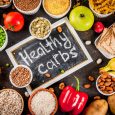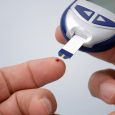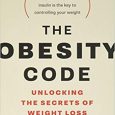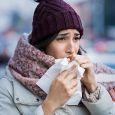Be Aware of Chemicals in Your Food
It’s amazing how much our food has changed over the past few decades. In fact, the food we eat today would be virtually unrecognizable by our parents and grandparents. Think about it, the next time you’re in a grocery store pick up a simple loaf of bread and read the ingredients. You might recognize the first three or four but after that, it all becomes Latin and chemistry.
Many experts recognize the start of the decline of our food supply as starting with the industrialization or mass production of bread. To make it last longer on the shelves processors removed the Omega 3 fatty acids from the grain. They have a short shelf life, which means the bread goes bad on the shelf. Producers want to make it last as long as possible on grocery store shelves because it cuts down on the cost of distribution – if you only have to make a delivery once a month, that’s a lot cheaper than once a week.
Once the omega fatty acids are removed from the grain, then preservatives, sweeteners and all sorts of things are added. What’s amusing is that due to the growing awareness of the importance of Omega 3 fatty acids, bread makers are now adding it back into the bread.
As the industrialization of our food grew the return on investment for growers became even more important. To ensure maximum yield, they began spraying crops with hordes of pesticides and fungicides. These chemicals make their way into the food we eat every day. And it doesn’t end there. Food coloring, artificial sweeteners, hormones and antibiotics are all added to our processed foods.
For example, Potassium bromate is illegal in every country except Japan and the U.S. because it is a carcinogen, however, it is added to bread manufactured by the country’s largest bread manufacturers – it gives your bread that chewy texture because it makes the bread rise higher. Unfortunately, adding dangerous chemicals to our food supply is all too common.
You may be asking, “What about the FDA?” To be fair, the FDA does recognize chemicals added to our food and approves or disapproves them based on testing. That being said, think about all of the additives and chemicals that were approved by the FDA only to be later banned. We’re talking about saccharine, for example, which was later deemed to be a carcinogen.
Whether we’re talking about bread or cereal, packaged drinks and even our milk and meat supply, there are chemicals being added to your food. These chemicals, we’re talking about, additives and preservatives and pesticides, can be harmful to your health, sometimes even causing problems as serious as cancer.
There is good news…
Learning how to read labels, understanding what additives and preservatives are in your food and learning how to buy the healthiest foods for you and your family can drastically change your health.

This report is divided into three main sections:
1. Understanding and recognizing food additives and preservatives
2. Understanding and recognizing pesticides
3. Tips and strategies for healthier eating; reading labels, buying organic and avoiding processed foods.
Let’s get started!
Part One: Food Additives and Preservatives
What Are Food Additives?
Food additives are quite simply, things that are added to our food. For example, if you’re making pickles you’d add vinegar to those cucumbers. Therefore, vinegar could be considered an additive. If you’re making strawberry jam, you’d add pectin and sugar, which would then be considered food additives.
Unfortunately, if you’re buying pickles or jam in the grocery store your nutrition label is most likely going to list more than strawberries, pectin and sugar. The industrialization of food, mass production, had meant that in order for manufacturers to make the most money they want to maximize their processes. They want the food to last as long as possible on the shelves and they want it to taste good.
Food Additives Have Different Jobs
Here are just a few types of additives and what they are designed to do:
- Food acids are added to modify the flavor and to preserve food. Common food acids include vinegar, citric acid, malic acid, and lactic acid.
- Acidity regulators modify the acidity and alkalinity of foods.
- Anticaking agents keep powders from caking or sticking.
- Antifoaming agents reduce or eliminate foaming in foods.
- Food colorings and color retention agents are added to enhance or maintain a food’s color.
- Emulsifiers allow water and oils to remain combined.
- Flavors and flavor enhancers can be natural or chemical and are there to enhance or add flavor.
- Humectants keep foods from drying out.
- Tracer gas improves shelf life.
- Preservatives prevent food from spoiling – they lengthen shelf life.
- Sweeteners are added to foods for flavoring and can be natural or chemical.
How are Additives Harmful to Your Health?
One important thing to note is that while unprocessed organic food is the ideal, not all additives and preservatives are dangerous or harmful to your health. Earlier we used the example that vinegar is an additive to make pickles and certainly vinegar isn’t dangerous. And adding Omega three fatty acids to a food isn’t dangerous.
That being said, many additives are considered dangerous despite being approved by the FDA. Some common culprits include:
- BHT, legal in the U.S. but banned in England, causes liver and kidney damage, behavioral problems, infertility, birth defects and cancer.
- Artificial coloring causes hyperactivity in children, learning disorders, nerve damage and it may be carcinogenic.
- Artificial sweeteners cause central nervous system damage, menstrual difficulties, may affect brain and growth development in an unborn fetus.
- Brominated vegetable causes organ damage, birth defects, and growth problems
- Carrageenan causes ulcers and cancer
- Partially Hydrogenated vegetable oils are associated with heart disease, cancer, high cholesterol, and allergies.
- Nitrates cause cancer and even death.
- MSG causes headaches, reproductive disorders, high blood pressure and allergic reactions.
- Potassium bromate causes nervous system, kidney disorders, gastrointestinal issues and cancer.
- Red 3 causes thyroid tumors in rats, and may cause them in humans as well.
- Yellow 6 is a carcinogen and has been found to cause adrenal gland and kidney tumors.
It all sounds pretty horrible, right? We’ll not to worry! By learning to read food nutrition labels and by shopping organic for the most common food culprits you can avoid ingesting these dangerous and harmful chemicals.
Before we get to our healthy eating tips, let’s talk a bit about pesticides.

Part Two: Pesticides In Your Food
If you’ve ever tried to grow a garden then you know what a bother bugs, mold and invasive weeds can thwart your efforts, often to the point of frustration. Industrial farmers have the same issues that you have in your own back yard. When their crops are destroyed by bugs, fungus and other invasive plants then they lose their income.
Unfortunately, the choices they make to maximize their crops put your health at risk. Yes, the EPA has approval processes for pesticides however, that doesn’t mean they’re safe as we’ll show you and a large number of our produce is imported from countries that have less regimented controls on their pesticide usage.
So What Do These Various Chemicals Do to Your Health?
The health effects of pesticides depend on the type of pesticide. Some, like organophosphates and carbamates, affect the nervous system. Others can irritate your lungs, skin, or eyes. Other pesticides are carcinogens and cause cancer or affect your body’s hormones.
For example,
- Acephate can over stimulate your nervous system causing nausea, dizziness, confusion, and respiratory paralysis or death.
- Alachlor was classified by the EPA “likely” to be a human carcinogen at high doses, but “ not likely” at low doses.
- Ethanol is generally recognized as a human developmental neurotoxicant.
Pesticides not only affect those who consume them or come in contact with them, they affect the unborn resulting in birth defects and neurological problems.
We’ve listed on a few of the more than 9,000 pesticides permitted for use in the United States. Each and every one poses potential health risks to you and your loved ones.
The Most Dangerous Foods
A few years ago several agencies studied foods commonly contaminated by pesticides. The FDA does evaluate foods based on what they consider “acceptable” levels of pesticide contamination. The most contaminated foods, according to these studies, are often referred to as the dirty dozen and include:
1. Peaches
2. Apples
3. Bell Peppers
4. Celery
5. Nectarines
6. Strawberries
7. Cherries
8. Pears
9. Grapes (imported
10. Spinach
11. Lettuce
12. Potatoes
It should also be noted that many of these fruits and vegetables contained pesticides not approved for use on that particular crop. For example, a pesticide, which is approved for spinach, may not be approved for use on peaches but was nonetheless found on peaches. Additionally, carrots, green beans, cucumbers, raspberries, domestic grapes, and oranges all rated very highly in the studies for containing pesticides.
Before you give up eating entirely or just throw your hands up in frustration, let’s move onto part three and discuss how to protect yourself and your loved ones.

Part Three: Eating Healthy – 7 Steps to Reduce Your Exposure to Harmful Chemicals and Save Money on Your Grocery Bill.
Throughout this report, we’ve talked about a variety of harmful additives and pesticides. The solution to avoiding these chemicals may be much easier to manage than you think. Here are ___ steps to avoiding harmful chemicals in your food.
Step One – Read the label. Ideally, you should be able to recognize every item on the nutrition label. If you start seeing preservatives, artificial sweeteners and food colorings then you probably want to put it back on the grocery store shelf.
Avoiding all processed foods is the ideal, anything that comes in a box and has undergone physical or chemical treatment resulting in a substantial change in the original state of the food. However, as more and more people are demanding higher quality food, you can find processed foods that are all natural and/or organic.
For example, breakfast cereal is generally considered a processed food and it can be full of harmful sweeteners, colorants, preservatives and additives or it can be all natural and completely healthy for you.
Step Two – Avoid the dirty dozen. Buy organic fruits and veggies when you can. If you cannot buy organic fruits and veggies because they’re unavailable or too expensive, wash them thoroughly and peel your fruits and veggies.
Step Three – Organic meats and dairy. Our farm animals are not only fed antibiotics and hormones to maximize production, they also eat crops contaminated with pesticides. Buy organic dairy and meats.
One big hurdle to eating organic is economical – it costs more than eating processed foods.
Saving Money on Healthy Food
To save money on your organic grocery bill follow these 4 steps.
#1 Buy according to what is in season. Buying strawberries in December is definitely going to cost you more than buying them in July. If you find that you need strawberries in December, consider comparing the cost of organic frozen compared to organic fresh, you’ll often find the frozen option is less expensive.
#2 Buy according to your store’s supplement. Every day, markets put their produce on special. When you make your list, shop from the store’s supplement. If organic corn is on sale, then add it to your menu for the week. You’ll save 20% off your grocery bill following this simple strategy.
#3 Buy locally. Local from local organic farmers can charge much less for their produce because they don’t have to pay for distribution. Additionally, you’re helping to sustain your local economy. Joining a CSA, community sustained agriculture, program or shopping at your local farmer’s market is a great way to buy healthy food on a budget.
#4 Eat one more vegetarian meal each week. Meat and dairy are the most expensive items on your grocery list. By cutting back and eating one less meal with meat, you’ll save money.

Conclusion
The industrialization of our food has caused myriad health problems for individuals of all ages and walks of life. From food additives and preservatives to pesticides, our health has been affected in ways we can only begin to imagine. Scientists are only touching the surface of what these chemicals have done, and continue to do, to our body.
However, armed with the knowledge in this report you can avoid these harmful additives and pesticides by following a few basic tips. Remember the old adage we began this report with? “If your grandmother wouldn’t have recognized and eaten it, don’t eat it. Grandmother wouldn’t recognize tube yogurt, she wouldn’t recognize diet soda, she wouldn’t recognize snack cakes that last longer on the shelves than we do and she wouldn’t recognize instant noodles in a cup.
The easiest way to stay health and avoid all this garbage is to eat organic and unprocessed foods whenever possible. To your health!









